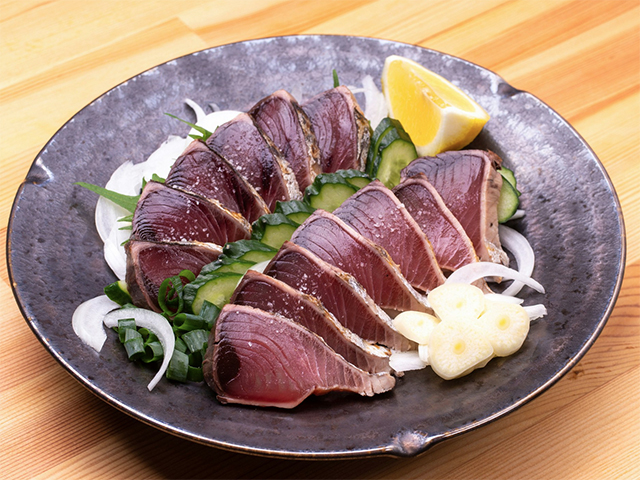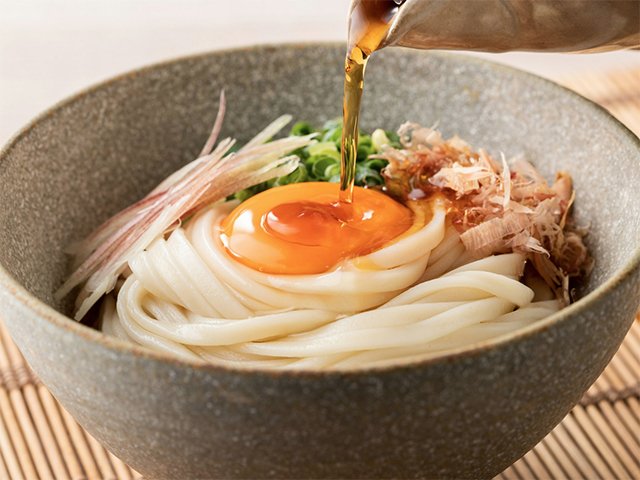Food Destinations Japan

Love sushi, ramen and tempura? Think you know Japanese cuisine? While certain dishes can be found across Japan, each region also has its own unique delicacies based upon the local ecology, seasonal produce and the daily catch, with many areas renowned for a single iconic dish, perfected by chefs who hone their craft over generations.
From time-honoured fermentation techniques and seasoning staples such as miso paste, soy sauce, pickles and mirin which vary from region to region, to preparing meals which are both nutritionally balanced and beautiful to look at, the art of Japanese cuisine – washoku – is officially recognised as a UNESCO Intangible Cultural Heritage Property, yet many of the country's fascinating food regions and flavours are still largely undiscovered by visitors.
To shine a light on the diversity and delicacy of Japanese cuisine, Japan National Tourism Organization (JNTO), has shared nine prefectures and their must-try dishes for Australian travellers keen to delve deeper into the flavours of Japan. But first, here's a quick refresh on Japanese table manners to ensure you pay your hosts the proper respect:
· Do feel free to slurp your noodles
· Do try your best to finish all your meal
· Do bring the serving dishes to your mouth, not vice-versa
· Do break food into manageable pieces before bringing it to your mouth
· Don't disregard how food is served or disassemble a dish – plating is intentional
· Don't put your elbows on the table
· Don't eat directly from the communal platter (put some onto a smaller plate to enjoy)
Sweet octopus and eel (Aichi Prefecture)
Head to Himaka Island, locally known as 'octopus (tako) island' to sample super soft octopus with a sweeter flavour. From boiled octopus to octopus sashimi, deep-fried tentacles to octopus shabu, there are myriad ways to enjoy it…including off the plate, with octopus characters displayed throughout the town. Another Aichi favourite during the summer months is hitsumabushi, a dish of grilled eel (unagi) atop white rice with an eel glaze. Add an extra splash of flavour by pouring a broth of dashi and tea over the bowl.
Beef and pickles (Kumamoto Prefecture)
Pickles and beef are the order of the day in Aso. The region's grass-fed Akaushi beef is traditionally served over a hearth accompanied by local fried tofu and taro. For the full farm experience, pair it with mustard greens rice and a traditional dagojiru dumpling and vegetable soup. Grown in the region's volcanic ash soil, takana is a vegetable harvested by hand and paired with salt and red chilli peppers to create flavour-packed Aso takana pickles. Many restaurants in Aso serve takana-meshi, which is made by fermenting takana with lactic acid for six months, then chopping them, stir-frying and mixing with rice.
Citrus delights (Ehime Prefecture)
Whilst Australians take mandarins and oranges for granted, in Ehime Prefecture, they are elevated to a whole new level. Ehime is Japan's top producer of mikan citrus fruits, a unique variety of satsuma mandarin, typically sweet and seedless, which are trending on TikTok for their jelly-like texture. Visitors can pick their own in the Yawatahama area, enjoy fresh mikan juice direct from taps around Matsuyama Castle and Dogo Onsen, or try them in everything from fruit sandwiches to parfaits.
 Remarkable ramen (Fukuoka Prefecture)
Remarkable ramen (Fukuoka Prefecture)
Famous for its Hakata ramen, a tonkotsu-style version with a milky pork bone broth and firm, thin noodles, Fukuoka is a haven for gourmet travellers, who can enjoy some of the region's signature delights at its bustling yatai food stalls. Set up every evening in the Tenjin and Nakasu areas, these street stalls are beloved by locals for both the flavoursome food and the chance to connect over a quick bowl of steaming broth or sizzling seafood. Popular picks to try include Hakata ramen (of course), grilled chicken yakitori, goma saba (a mackerel dish with sesame), or local oden hot pot. Remember not to overstay your welcome, yatai stalls aren't the spot for slow dining and you should only stay whilst eating then pass your seat to the next diner.
Noodles, mutton and more (Hokkaido Prefecture)
Ramen is also the order of the day in Sapporo, where travellers can taste some of the best noodles in Hokkaido in one tiny strip of street food stalls known as Ramen Alley. Miso ramen is iconic here, but the region is also well known for its jingisukan, a grilled mutton dish with vegetables, soy sauce and sake dipping sauce; as well as ishikari-nabe, a miso-based salmon and vegetable hotpot with konnyaku, a firm jelly made from the native konjac yam.
Unbelievable Udon (Kagawa Prefecture)
No visit to Kagawa Prefecture is complete without slurping down a bowl of Sanuki udon noodles, named after the former Sanuki Province. Made from wheat with a square shape, flat edges and chewy texture, Kagawa is home to more than 700 specialist Sanuki udon restaurants. Simple and heartwarming, the dish is usually served with egg yolk or niboshi (dried sardines). Another iconic dish to dive into in Kagawa is hone-tsuki dori, a juicy, spicy version of our retro chicken Maryland.
Smoky seafood (Kochi Prefecture)
For a dish that will have you feeling like you're stepping back in time, Kochi Prefecture's katsuo no tataki will hit the spot. Featuring bonito, a fish from the tuna family, which is seared over a straw fire to imbue a smoky flavour, the fish is served in thick slices with raw ginger and garlic, then dipped into a soy sauce and citrus dressing.
Wonderful wagyu (Mie Prefecture)
Whilst less globally renowned than its wagyu rival Kobe beef, many Japanese locals consider Matsusaka beef as the country's best. The product of cattle who are raised in stress-free environment which contributes to the meat's ultra-soft texture and marbling, the area around Matsusaka Station is home to a plethora of restaurants dishing up the local specialty in every manner imaginable, from sukiyaki (thinly sliced beef simmered in a soy-based broth and dipped in raw egg) and yakiniku (grilled with mixed dipping sauces) to shabu-shabu, teppanyaki and sashimi, this melt-in-your-mouth meat is a must for visitors to Matsusaka.
The Kingdom of Fermentation (Ishikawa Prefecture)
In the remote area of Noto Peninsula, located in the top half of Ishikawa Prefecture, is the unofficial Japanese capital of fermentation food culture, with the region's sea and mountains providing plenty of ingredients primed for pickling. Recognised by the United Nations for its Globally Important Agricultural Heritage System (GIAHS), and the local unique fish-based ishiri sauce, often used as a replacement for salt, is registered as an Intangible Folk Cultural Property, food is serious business here. Don't miss the iconic Noto-don seafood bowl which is packed with raw fish, scallops, shrimp and crab on a bed of vinegared rice, typically garnered with shiso leaves, wasabi, vegetables and soy sauce.
MORE





